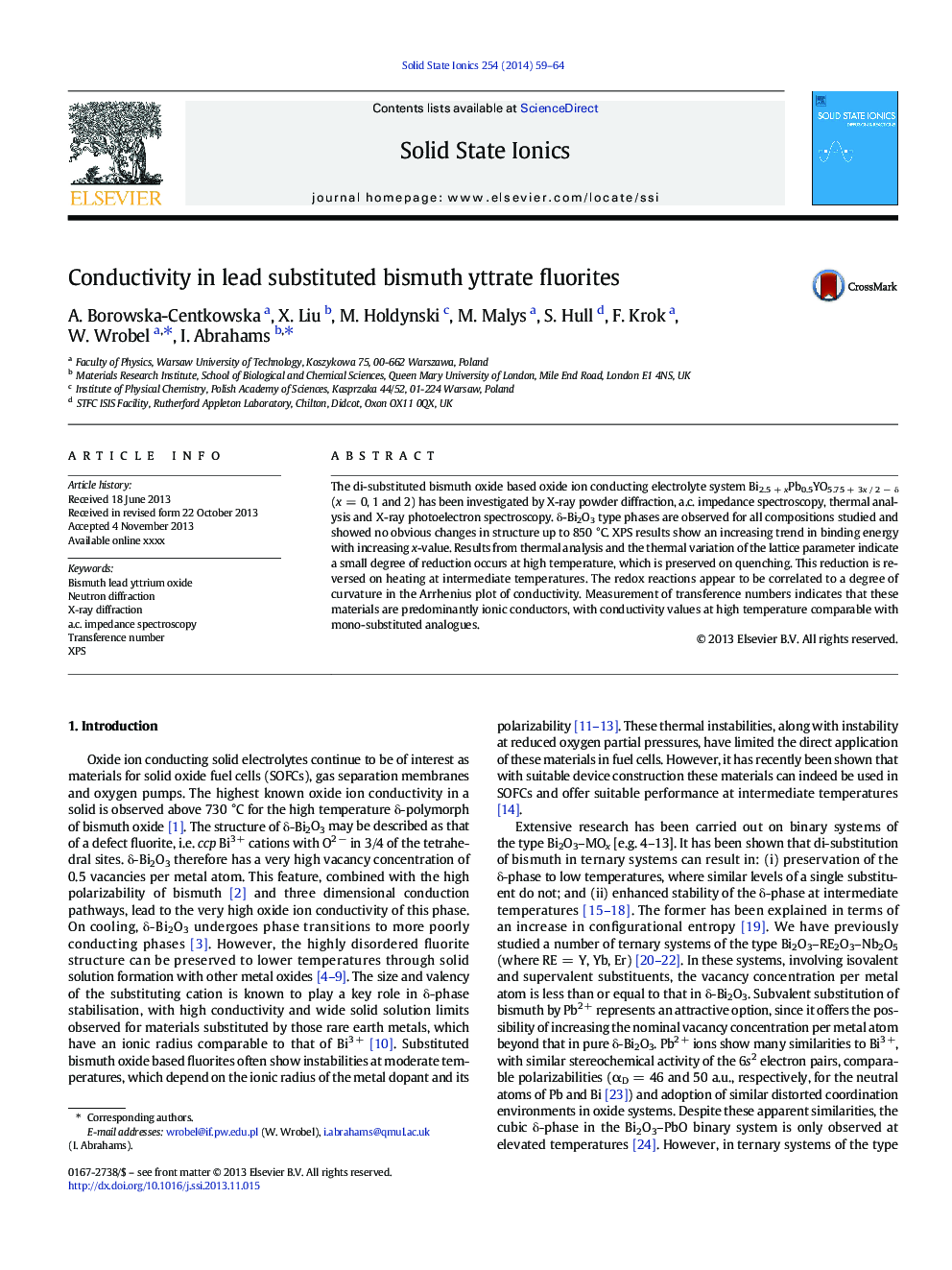| Article ID | Journal | Published Year | Pages | File Type |
|---|---|---|---|---|
| 7746626 | Solid State Ionics | 2014 | 6 Pages |
Abstract
The di-substituted bismuth oxide based oxide ion conducting electrolyte system Bi2.5 + xPb0.5YO5.75 + 3x / 2 â δ (x = 0, 1 and 2) has been investigated by X-ray powder diffraction, a.c. impedance spectroscopy, thermal analysis and X-ray photoelectron spectroscopy. δ-Bi2O3 type phases are observed for all compositions studied and showed no obvious changes in structure up to 850 °C. XPS results show an increasing trend in binding energy with increasing x-value. Results from thermal analysis and the thermal variation of the lattice parameter indicate a small degree of reduction occurs at high temperature, which is preserved on quenching. This reduction is reversed on heating at intermediate temperatures. The redox reactions appear to be correlated to a degree of curvature in the Arrhenius plot of conductivity. Measurement of transference numbers indicates that these materials are predominantly ionic conductors, with conductivity values at high temperature comparable with mono-substituted analogues.
Related Topics
Physical Sciences and Engineering
Chemistry
Electrochemistry
Authors
A. Borowska-Centkowska, X. Liu, M. Holdynski, M. Malys, S. Hull, F. Krok, W. Wrobel, I. Abrahams,
